අර්න්ස්ට් හෙකල් ඔහුගේ ලක්දිව ගැන රචිත කෘතියේ සිංහලයින් ගැන කියන්නේ ඔවුන් දිගු කලක් තිස්සේ ශිෂ්ටසම්පන්න ජාතියක් වුනත්, ඇඳුම් සහ ගෙපැල් සහ අනෙකුත් දේවල් අතින් ඔවුන් වනචාරීන් වගේ ආදිකල්පිතයි කියලයි. මේ ප්රකාශයෙ ඉතා ලොකු සත්යතාවයක් තියනවා කියල මටත් තදින් වැටහුණා.

සිංහලයන්ගේ පුරාණ හුරු පුරුදු
දුම්රිය පාරෙන් සහ ප්රධාන පාරෙන් ඉවත් වුනු ගමන්ම, ඔබට දැක ගන්න පුළුවන් පොල්ගස් යට ඔවුන්ගේ කුඩා පැල්පත් වල ඉතා ප්රාථමික ආකාරයට ඔවුන් ජීවත් වෙන හැටි. බොහෝවිට වසර 2,000කට 3,000කට කලින් ඔවුන් ලක්දිවට ප්රථමයෙන් ආපු කාලෙත් ඉන්න ඇත්තේ මෙහෙම වෙන්න ඇති.

එංගලන්තේ සිට ආ “ඇජැක්ස්”
මේ මාසෙ (දෙසැම්බර්) හතර වෙනිදා මගේ මිත්රයා, ඇජැක්ස්, එංගලන්තේ ඉඳන් කොළඹ ආවා ඇසෑම් වලට යන ගමන්. ඔහු එහි තේ වගා කරනවා. සතියක් මේ දූපතේ ඉන්නවාලු ගමනට පොඩි විවේකයක් දෙන්න. ඔහු සමාජවාදයට ගොඩක් බර ඒවගේම විනෝදෙටත් බර අපූරු හාදයෙක්. තවත් කියනවනම් ඉතා දක්ෂ, යහපත් ගති ඇති හොඳ සංගීත ලෝලියෙක්.
පිටිසර වැසියෙක්

අපි දෙන්නා ආවා මහනුවරට. ඇවිල්ලා ටික වෙලාවකට පස්සෙ අපි ගියා මං ළඟකදි අඳුනගත්ත සිංහල ගැමියෙකුව හොයාගෙන. ඔහුගෙ නම කළුවා. ඔහුව අපිට හමුවුනා මහනුවර නගරෙන් සැතපුමක් විතර ඈත, කඳු අතරේ තියන ඔහුත් ඔහුගේ සහෝදරයා කිරාත් ජීවත් වෙන කුඩා ගෙපැලෙදි.
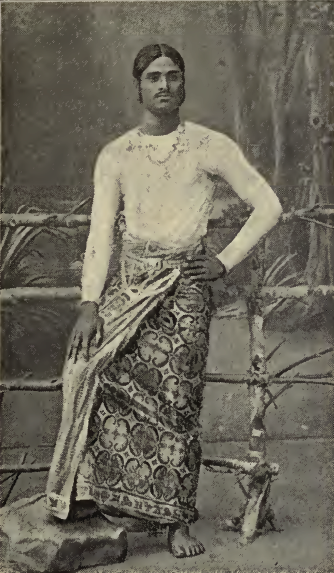
මහ නුවරින් එපිට ගෙපැලක්
මේ සෙවිල්ලෙදි මහ නුවරින් එළියට ඇවිත් බඩවැටි දිගේ අඩිපාරවල් දිගේ ගිහිල්ල ගිහිල්ල අන්තිමේදි අපිව වැටුනේ ලස්සන පුංචි දෙණියකට. මේ බඩවැටිය වල් සූරියකාන්ත මල් වලින් පිරිච්ච, ඒ වගේම “වර්බෙනා” වගේ මල් වර්ගයක් පිපෙන සුවිශේෂ ලතා ගොමුවක් වන බාලොලියා පිරීගිය බඩවැටියක්. කියන විදිහට නම් බාලොලියා ශාකය ලංකාවට හඳුන්වාදෙන්නේ අවුරුදු 50කට විතර කලින්. දැන් එය ඉතා විශාල වශයෙන් දූපත පුරාම පැතිර ගිහින්.

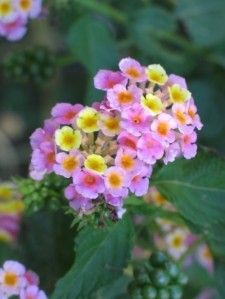
අපි ආපු දෙණිය පහළ තිබුණු හෙල්මළු ක්රමයට අතුරපු කුඹුරු ලියදි දෙපැත්තෙම වන ලැහැබක් දකින්න තිබ්බා. මේ තුරු ගොමුව අතර තිබුණු පොල් සහ කෙසෙල් ගස් ගොන්න තමයි පෙන්නුම් කලේ මෙහි මිනිස් වාසස්ථානයක හැඩහුරුකමක් තියනවා කියලා. මේ ගස් ගොන්න අතරින් එක තුරු වදුලක් යට තිබුණු පිදුරු සෙවිලි කල කුඩා මැටි ගෙපැලකින් අපිට කළුවා සොයාගන්න පුළුවන් වුනා. ඇත්තෙන්ම කිව්වොත් ඔහු අප එනවා දැකලා ඔල්වර හඬ දීගෙන අප ඉදිරියට මුණ ගැසෙන්න ආවා.
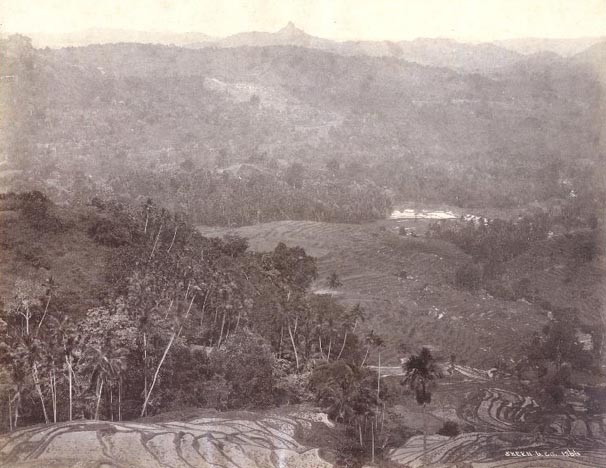
අපි ඉක්මණට හෙවනක් යටින් ඉඳගෙන පුළුපුළුවන් හැටියට කැඩිච්ච ඉංග්රීසියෙනුයි දෙමළෙනුයි කතා බහ කළා. මේ සහෝදරයන් දෙන්නා බොහොම මිත්රශීලියි. අපට පොල් කිරි සහ කිතුල් රා* බොන්න ගෙනාවා. (මේවා හදන්නේ කිතුල් ගහේ කිතුල් මල් ගොබය කපාදාලා. මල් ගොබේ කැපුමෙන් එන යුෂය මුට්ටියකට ගලා එන්න සලස්වලා ඒ ටික එකතු කරගෙන පැහෙන්න තියනවා. පුස් සහිත රසක් තියෙන්නේ. මට නම් කියන්න බෑ මම එකට කැමති වුනයි කියලා)
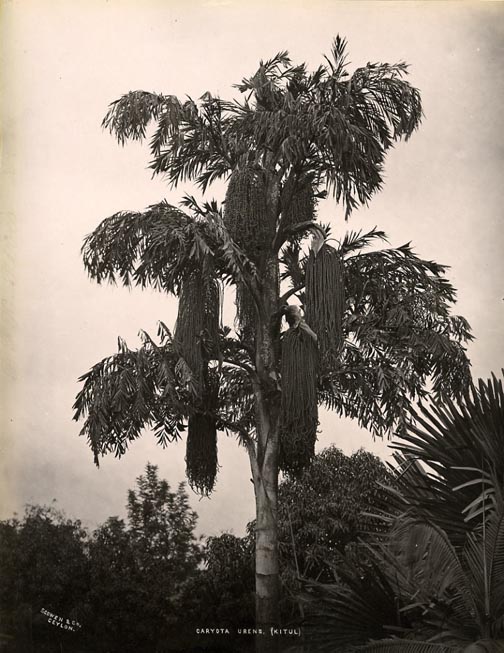
ඔවුන්ගේ පියා අපි ආපු බව ඇහිලා සැතපුම් භාගයක් විතර එහා ඉඳන් අපිව බලන්න ආවා. නියම පරණ ජොලි පොරක්! පළල් මුහුණයි, විශාල බණ්ඩියයි. ඒත් අවාසනාවකට අපිට සිංහල කතාකරන්න බැරි හන්දා ඔහුත් එක්ක අතින් පයින් මුහුණින් හැරෙන්න කටින් කතා බහක් කරන්න බැරි වුනා.
[අනුවාදක සටහන:
*– කෘතියේ සඳහන් කොට ඇත්තේ “chágeri beer” සහ “chágeri palm” ලෙසිනි. කිතුල් ගස සාමාන්යයෙන් හඳුන්වන්නේ “jaggery palm” ලෙසිනි. එම නිසා මෙය බොහෝ විට කිතුල් විය හැක.
]
“ආදම්ගේ ශිඛරය මතින් එලිෆන්ටා ගුහා වෙත – ලක්දිව සහ ඉන්දියාවේ රූප සටහන්” : එඩ්වඩ් කාපෙන්ටර්
දෙවන පරිච්ඡේදය : මහනුවර හා පිටිසර ජීවිතය
From Adam’s Peak To Elephanta : Sketches in Ceylon and India by Edward Carpenter
CHAPTER II: KANDY AND PEASANT LIFE
Ernst Haeckel in his book about Ceylon says that the Cinghalese, though a long civilised race, are as primitive as savages in their dress, cabins, etc. ; and this remark strikes me as very true. As soon as you get off the railways and main roads you find them living in their little huts under their cocopalms in the most primitive fashion, and probably much as they did when they first came to Ceylon, 2,000 or 3,000 years ago.
On the 4th of this month (December), my friend ” Ajax ” landed at Colombo from England. He is on his way to Assam, in the tea-planting line, and is staying a week in the island to break the journey. He is a thorough Socialist in feeling, and a jolly fellow, always bright and good-natured, and with a great turn for music. We came up here to Kandy, and shortly after our arrival went to call on a Cinghalese peasant whose acquaintance I had lately made—Kalua by name—and found him in his little cabin, about a mile out of the town among the hills, where he lives with his brother Kirrah. Leaving Kandy by footpaths and alongside hedgerows overrun by a wild sunflower, and by that extraordinary creeper, with a verbena-like blossom, the lantana, which though said to have been introduced only about fifty years ago now runs In masses over the whole island, we came at last to a lovely little glen, with rice-lands laid out in terraces at the bottom, and tangles of scrub and jungle up the sides, among which were clumps of coco-nut and banana, indicating the presence of habitations. Under one of these groves, in a tiny litde mud and thatch cabin, we found Kalua ; in fact he saw us coming, and with a shout ran down to meet us. We were soon seated in the shade and talking such broken English and Tamil as we could respectively command. The brothers were very friendly, and brought us coconut milk and chdgeri beer (made by cutting the great flower-bud off the chageri palm, and letting the sap from the wounded stem flow into a jar, where it soon ferments ; it has a musty flavor, and I cannot say that I care for it). Then their father, hearing of our arrival, came from half a mile off to have a look at us—a regular jolly old savage, with broad face and broad belly—but unfortunately, as we could not speak Cinghalese, there was no means of communicating with him, except by signs.
ලක්දිව ගමන් සටහන් පිටු අංක: 9

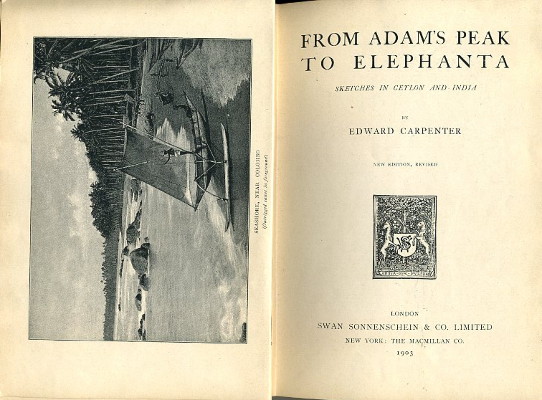
2 thoughts on “Primitive Habits of the Cinghalese”